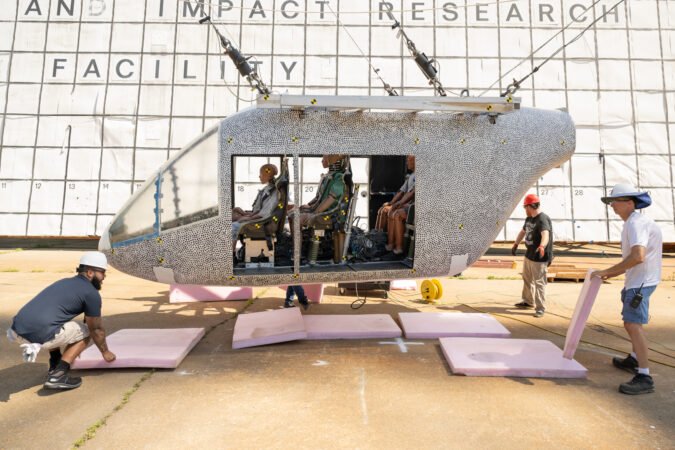Quick Takeaways
-
Drop Test Achievement: NASA successfully conducted a drop test on an air taxi model, crucial for evaluating aircraft safety during crashes.
-
Research Focus: The primary aim is to analyze materials that effectively absorb impact forces, enhancing crash safety.
-
Test Setup: The aircraft model, equipped with weighted test dummies, was dropped from 35 feet using a gantry system.
- Location: The experiment took place at NASA’s Langley Research Center in Hampton, Virginia, highlighting ongoing advancements in aerospace safety research.
NASA Drop Test Supports Safer Air Taxi Designs
NASA recently completed an important drop test that could change air travel. On June 26, researchers at Langley Research Center tested a prototype aircraft modeled after an air taxi. They used weighted test dummies to simulate real-life conditions inside the aircraft.
The team hoisted the aircraft 35 feet above the ground. Then, they released it from a tall steel structure called a gantry. This dramatic drop allowed researchers to study how different materials absorb impact forces during a crash. By analyzing the results, NASA aims to improve safety measures for future air taxis.
Air taxis promise to revolutionize urban transportation. They could ease traffic congestion and reduce travel times significantly. Furthermore, advancements in safety will build public trust in these new vehicles.
As technology evolves, the use of innovative materials becomes increasingly crucial. The data gathered from this drop test will guide engineers in designing safer air taxis. With ongoing research, we can expect a future where safer urban air travel is a reality.
The implications of this work are significant. Safer air taxis could lead to a more efficient transport system. This, in turn, enhances overall quality of life for urban residents. As we look to the skies, we can feel optimistic about the future of air travel.
Stay Ahead with the Latest Tech Trends
Dive deeper into the world of Cryptocurrency and its impact on global finance.
Explore past and present digital transformations on the Internet Archive.
SciV1

